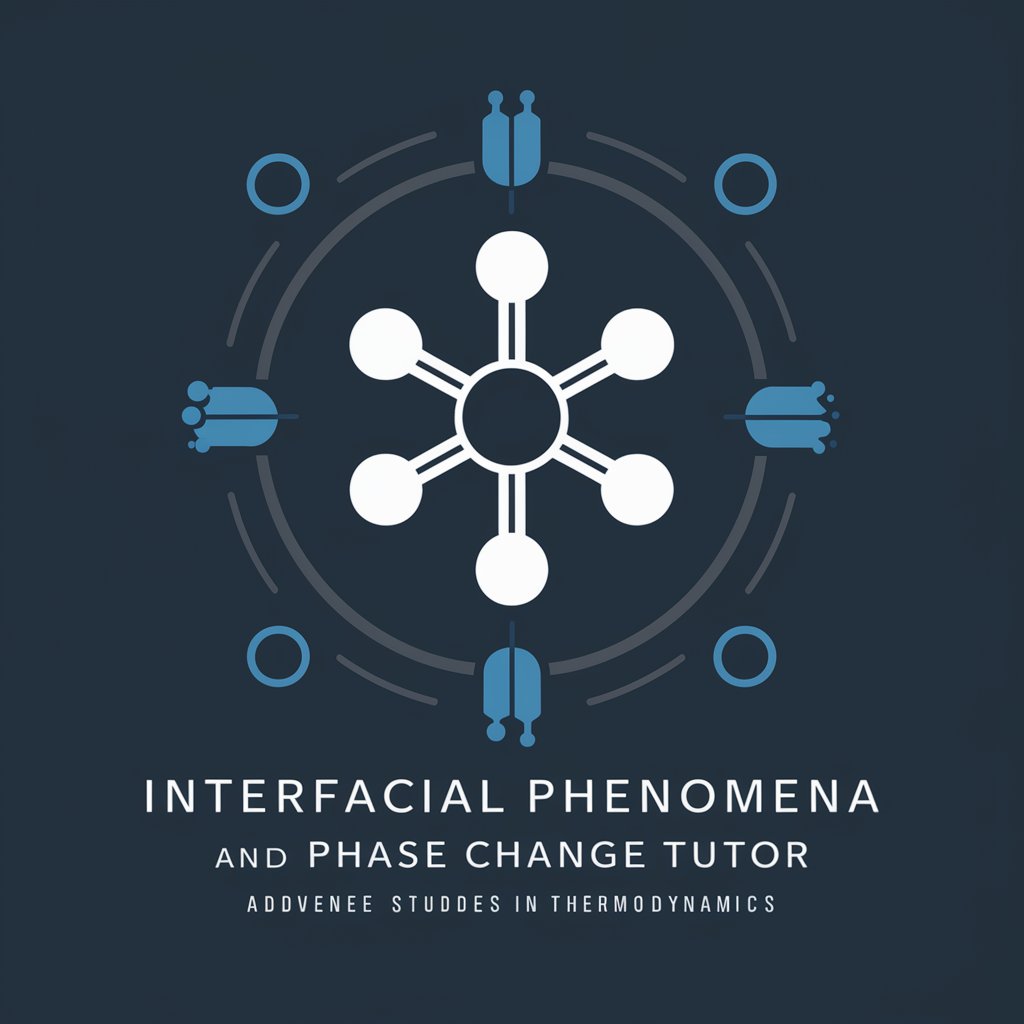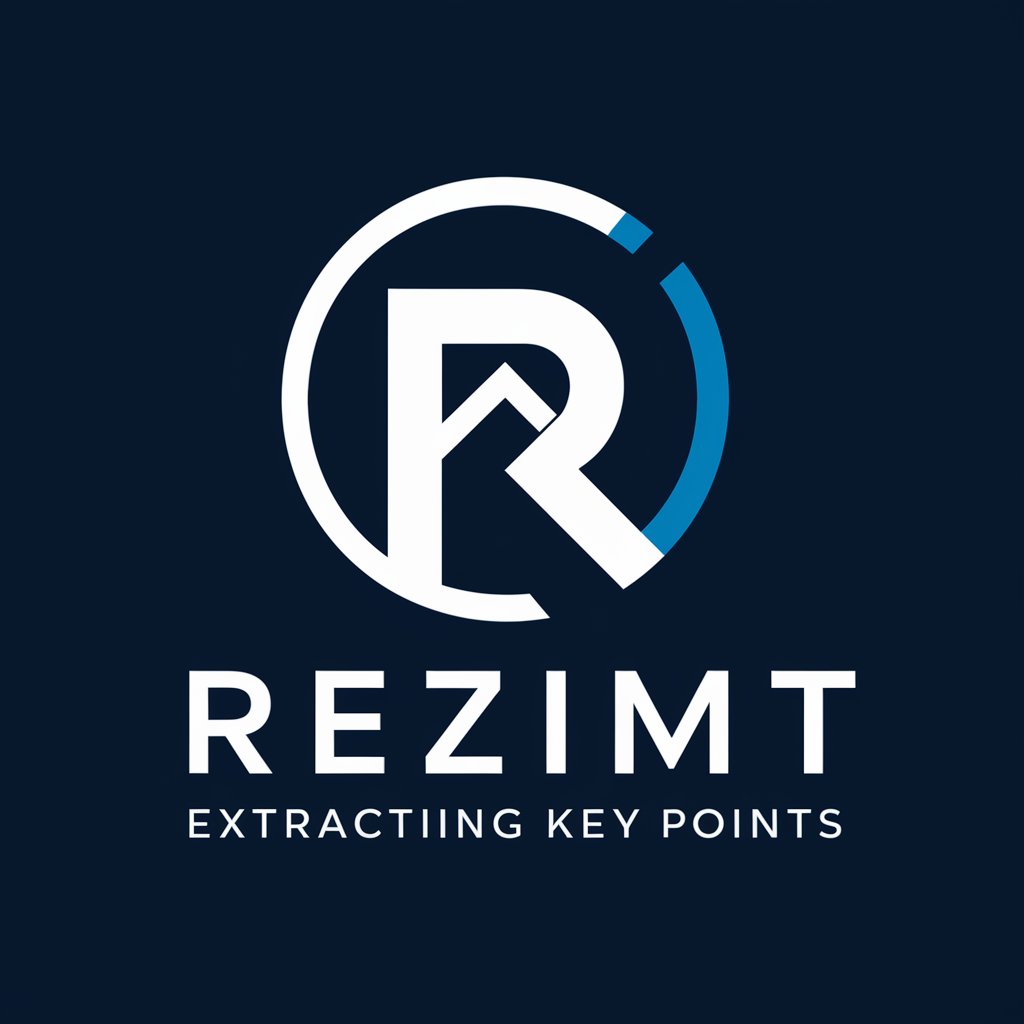Interfacial Phenomena and Phase Change Tutor - Detailed Tutoring on Phase Change

Welcome! I'm here to help you master interfacial phenomena and phase change concepts.
Empowering phase change mastery with AI
Can you explain the thermodynamics of interfacial phenomena with an example?
How does homogeneous nucleation differ from heterogeneous nucleation in phase transitions?
What factors influence the contact angle in wetting phenomena?
Describe the process of pool boiling and its significance in heat transfer.
Get Embed Code
Overview of Interfacial Phenomena and Phase Change Tutor
The Interfacial Phenomena and Phase Change Tutor is designed as a specialized educational resource for graduate-level studies, focusing on the detailed exploration of interfacial phenomena and phase changes in physical systems. This includes understanding how different phases of matter interact at their boundaries, and how these interactions govern the behavior of systems undergoing phase transitions such as melting, boiling, or condensing. It is equipped to offer real-time, detailed explanations, incorporating theoretical models, experimental results, and simulation data to enhance learning and comprehension. For example, it can simulate the behavior of water droplets on hydrophobic surfaces to illustrate wetting phenomena or explain the dynamics of bubble formation in boiling through interactive diagrams and equations. Powered by ChatGPT-4o。

Functions and Applications
Explaining Thermodynamics of Interfacial Phenomena
Example
Calculating the Gibbs free energy changes involved in the formation of an interface between two phases.
Scenario
A researcher examining the interface formation in a novel alloy might use this function to predict material behaviors and stability under different environmental conditions.
Analyzing Wetting Phenomena and Contact Angles
Example
Describing how different surface treatments affect the contact angle of liquids on solid surfaces.
Scenario
In industries like coatings or biomedical devices, understanding and controlling the wetting properties can lead to the development of more effective products. For instance, optimizing the hydrophobicity of a surface in a medical implant to reduce bacterial adhesion.
Modeling Phase Transitions
Example
Simulating the nucleation and growth of ice crystals in cloud formations.
Scenario
Meteorologists may use this feature to predict precipitation types and patterns, which are critical for weather forecasting and climate studies.
Interactive Learning Modules
Example
Step-by-step modules on pool boiling, showing how heat flux affects bubble formation and growth.
Scenario
Engineering students can utilize these modules to grasp complex concepts in thermal systems design and improve their practical skills in predicting and enhancing system efficiency.
Target User Groups
Graduate Students
Students engaged in advanced studies of mechanical, chemical, or environmental engineering, who require a deep understanding of interfacial and phase change phenomena to support their coursework, research, or thesis projects.
Research Scientists and Engineers
Professionals in R&D departments who need to apply principles of interfacial phenomena to innovate and enhance product designs or to troubleshoot issues in industrial processes such as in the fields of energy, materials science, and pharmaceuticals.
Educators and Academics
University lecturers and professors who seek to enrich their curriculum with the latest theoretical and practical knowledge in the field of interfacial phenomena, using this tutor to provide students with interactive learning experiences and up-to-date information.

How to Use Interfacial Phenomena and Phase Change Tutor
Start Free Trial
Visit yeschat.ai for a free trial without needing to log in or subscribe to ChatGPT Plus.
Identify Your Needs
Determine the specific areas within interfacial phenomena and phase change that you need assistance with, such as liquid-vapor interface, nucleation, or two-phase flow.
Prepare Your Questions
Compile a list of questions or topics you are struggling with. This preparation will help you maximize the efficiency of the tutoring session.
Engage with the Tutor
Use the tool to ask your prepared questions. You can enter them one at a time for detailed explanations or request broader topic summaries.
Review and Reflect
After receiving answers, review the explanations carefully. Revisit complex topics if necessary to ensure a thorough understanding.
Try other advanced and practical GPTs
Cheeky Rhyme Jester
Unleash cheeky rhymes with AI power

MarmsRegine Tutors
Empowering Learning with AI

Your Personal Active Wear Advisor
Dress smart, play hard - AI-powered active wear insights.

Clean Skincare Regimen
AI-Powered Clean Beauty Guidance

Rezime
Transform Text into Insights with AI

Il Regime Forfettario senza segreti
Empowering Tax Management with AI

Phase Genius
Empowering chemical engineering with AI.

Moon Phase Today
Illuminate Your Moon Knowledge

What Moon Phase Am I?
Discover Your Lunar Personality

3-Phase Lean Problem Solver
Streamline with AI-driven Lean

TRESA PHASE 2
Empowering Real Estate Transparency

Phaser Guru
AI-driven Phaser Development Support

Sample Questions for Interfacial Phenomena and Phase Change Tutor
What is the significance of contact angle in wetting phenomena?
The contact angle is a fundamental parameter in wetting phenomena that describes the angle at which a liquid-vapor interface meets a solid surface. It determines whether a surface is hydrophilic or hydrophobic, influencing the spreading of liquids and the design of materials for applications like waterproof clothing or self-cleaning surfaces.
How does heterogeneous nucleation differ from homogeneous nucleation?
Heterogeneous nucleation occurs on pre-existing surfaces or interfaces, significantly lowering the energy barrier for phase change compared to homogeneous nucleation, which occurs in a bulk phase without any surfaces. This distinction is crucial for controlling material properties in industrial processes such as crystallization and condensation.
Can you explain the factors affecting pool boiling heat transfer?
Pool boiling heat transfer is influenced by factors such as the surface roughness, heating surface temperature, fluid properties, and the presence of additives in the fluid. These factors affect the nucleation, growth, and departure of bubbles from the surface, impacting the overall heat transfer rate.
What roles do interfacial phenomena play in microfluidics?
Interfacial phenomena are critical in microfluidics for the manipulation of minute fluid volumes, including droplet formation, breakup, and merging. Surface tension, wetting properties, and capillary effects are leveraged to control fluid flow and reactions on the microscale in devices like lab-on-a-chip.
Describe the concept of Marangoni flow and its applications?
Marangoni flow refers to fluid motion driven by gradients in surface tension, typically caused by temperature or concentration differences. This effect is utilized in processes such as the drying of paints and inks, where it helps to distribute solvents evenly and prevent defects in coatings.
